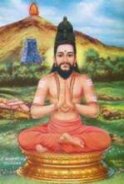

திரு அருணகிரிநாதர் அருளிய
திருப்புகழ்
Sri AruNagirinAthar's
Thiruppugazh
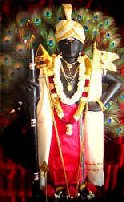
 |  திரு அருணகிரிநாதர் அருளிய Sri AruNagirinAthar's |  |
|---|
| திருப்புகழ் 471 கட்டி முண்டக (சிதம்பரம்) Thiruppugazh 471 kattimuNdaga (chidhambaram) |
 |  | தமிழிலும் ஆங்கிலத்திலும் பொருள் எழுதியது ஸ்ரீ கோபால சுந்தரம் Meanings in Tamil and English by Sri Gopala Sundaram | English in PDF PDF அமைப்பு | ஆலய வரிசை அகரவரிசை எண்வரிசை தேடல் venue list alphabetical numerical search |
|
தத்த தந்ததன தான தந்ததன தத்த தந்ததன தான தந்ததன தத்த தந்ததன தான தந்ததன ...... தனதான ......... பாடல் ......... கட்டி முண்டகர பாலி யங்கிதனை முட்டி யண்டமொடு தாவி விந்துவொலி கத்த மந்திரவ தான வெண்புரவி ...... மிசையேறிக் கற்ப கந்தெருவில் வீதி கொண்டுசுடர் பட்டி மண்டபமு டாடி யிந்துவொடு கட்டி விந்துபிச காமல் வெண்பொடிகொ ...... டசையாமற் சுட்டு வெம்புரநி றாக விஞ்சைகொடு தத்து வங்கள்விழ சாடி யெண்குணவர் சொர்க்கம் வந்துகையு ளாக எந்தைபத ...... முறமேவித் துக்கம் வெந்துவிழ ஞான முண்டுகுடில் வச்சி ரங்களென மேனி தங்கமுற சுத்த கம்புகுத வேத விந்தையொடு ...... புகழ்வேனோ எட்டி ரண்டுமறி யாத என்செவியி லெட்டி ரண்டுமிது வாமி லிங்கமென எட்டி ரண்டும்வெளி யாமொ ழிந்தகுரு ...... முருகோனே எட்டி ரண்டுதிசை யோட செங்குருதி யெட்டி ரண்டுமுரு வாகி வஞ்சகர்மெ லெட்டி ரண்டுதிசை யோர்கள் பொன்றஅயில் ...... விடுவோனே செட்டி யென்றுசிவ காமி தன்பதியில் கட்டு செங்கைவளை கூறு மெந்தையிட சித்த முங்குளிர நாதி வண்பொருளை ...... நவில்வோனே செட்டி யென்றுவன மேவி யின்பரச சத்தி யின்செயலி னாளை யன்புருக தெட்டி வந்துபுலி யூரின் மன்றுள்வளர் ...... பெருமாளே. ......... சொல் விளக்கம் ......... கட்டி ... பிராண வாயுவை (பாழில் ஓட விடாமல்) அதன் நிலையில் பிடித்துக் கட்டி *1, முண்டக அரபாலி அங்கிதனை முட்டி ... மூலாதார *2 கமலத்திலுள்ள அருள் பாலிக்கும் சிவாக்கினியை மூண்டு எழச் செய்து, அண்டமொடு தாவி ... அண்டமாகிய கபால பரியந்தம் (பிரமரந்திரம் வரை) தாவச் செய்து, விந்து ஒலி கத்த ... விந்து நாதம் (சிவ - சக்தி ஐக்கியம்) தோன்றி முழங்க, மந்திர அவதான வெண் புரவி மிசை ஏறி ... சிறப்பாகக் கட்டப்பட்ட கூடத்தில் மந்திரமயமாக நிற்கும் வெண்மைக் குதிரையின் *3 மேல் ஏறி, கற்பக அம் தெருவில் வீதி கொண்டு ... கற்பகத் தருவைப் போல் விரும்பியதை அளிக்க வல்ல அழகிய மேலைச் சிவ வீதியில் அந்த மாயக் குதிரையை நேராக ஓடச் செலுத்தி, சுடர் பட்டி மண்டபம் ஊடாடி ... எல்லா தத்துவங்களும் ஒன்றுபடும் ஒளிமயமான லலாடமண்டபத்தில் *4 சென்றடைந்து, (தியானம், பிரத்யாகரணம், தாரணை முதலிய) யோகப் பயிற்சிகளைப் பழகி *5, இந்துவொடு கட்டி விந்து பிசகாமல் ... சந்திர கலை சலியாமலும், விந்து கழலாமலும் உறுதி பெறக் கட்டி, வெண் பொடி கொடு அசையாமல் ... அந்த வெண்ணீற்றை அணிந்துகொண்டு அசையாமல் நின்று, சுட்டு வெம் புரம் நீறு ஆக விஞ்சை கொடு ... திரிபுரமாகிய (ஆணவம், கன்மம், மாயை என்ற) மும்மலங்களும் வெந்து நீறாகும்படி சுட்டு, அஷ்டமாசித்து வித்தைகள் *6 எல்லாம் கைவரப் பெற்று, தத்துவங்கள் விழச் சாடி ... தத்துவ சேஷ்டைகள் எல்லாம் வேரற்று விழும்படி அழித்து, எண் குணவர் சொர்க்கம் வந்து கையுள் ஆக ... எண்குணவராகிய *7 சிவபெருமானுடைய பதவி கை கூடி வந்து சித்திக்க, எந்தை பதம் உற மேவி ... அச்சிவபதவியில் நிலை பெற்றுப் பொருந்தி, துக்கம் வெந்து விழ ஞானம் உண்டு ... பிறவித் துன்பம் வெந்து நீறாகி ஒழிய, ஞானாமிர்த பானம் குடித்து, குடில் வச்சிரங்கள் என மேனி தங்கம் உற ... தேகம் வஜ்ர காயமாகவும், நிறம் தங்கம் போலவும் மாற்றி, சுத்த அகம் புகுத வேத விந்தையொடு புகழ்வேனோ ... தூய முக்தி கூட, விசித்திரமான வேதச்சந்தத்துடன் உனது திருப்புகழைப் பாடுவேனோ? எட்டு இரண்டும் அறியாத என் செவியில் ... எட்டும் இரண்டும் பத்து என்பதையும் தெரியாத என் காதுகளில் எட்டும் இரண்டும் இது ஆம் இலிங்கம் என ... இவையே சிவக் குறியாகிய இலிங்கம் *8 என்று எட்டு இரண்டும் வெளியா மொழிந்த குரு முருகோனே ... அந்த அகார உகார மகார *9 இலக்கணங்களைத் தெளிவாக உபதேசித்த குருவான முருகோனே, எட்டு இரண்டு திசை ஓட செம் குருதி ... எட்டுத் திசைகளிலும், இந்த அண்டத்தின் கீழும் மேலுமாக, பத்து திக்குகளிலும் சிவப்பு நிற இரத்தம் ஓடும்படி எட்டு இரண்டும் உருவாகி வஞ்சகர் மெல் ... பதினாறு வகை *10 உருவத் திருமேனி விளங்க (பாசறையில் இருந்து), வஞ்சகர்களாகிய அசுரர்களின் மீதும் எட்டு இரண்டு திசையோர்கள் பொன்ற அயில் விடுவோனே ... பின்னும் பத்துத் திசை அண்டங்களில் இருந்த அசுரர்கள் மீதும் அவர்கள் அழிய வேலை விடுபவனே, செட்டி என்று சிவகாமி தன் பதியில் ... வளையல் செட்டி வடிவெடுத்து, சிவகாமி அங்கயற் கண்ணியாய் வீற்றிருக்கும் மதுரையில், கட்டு செம் கை வளை கூறும் எந்தை இட(ம்) ... கைகள் சிவக்க, வளையல்களை அடுக்கி விலை கூறின எந்தை சிவபெருமானுடைய சித்தமும் குளிர அநாதி வண் பொருளை நவில்வோனே ... மனமும் குளிரும்படி ஆதியற்றதும், வளமையானதுமான மூலப் பிரணவப் பொருளை உபதேசித்தவனே, செட்டி என்று வனம் மேவி ... வளையல் செட்டியின் வேடத்துடன் நீயும் வள்ளிமலைச் சாரலில் தினை வனத்துக்குச் சென்று, இன்பரசச் சத்தியின் செயல் இ(ன்)னாளை அன்பு உருக ... அங்கே இச்சா சக்தி மயமான வள்ளி நாயகியை அன்பு கனிந்து தெட்டி வந்து புலியூரில் மன்றுள் வளர் பெருமாளே. ... அபகரித்து வந்து, சிதம்பரத்தில் பொன் அம்பலத்தில் விளங்கும் பெருமாளே. |
(*1) இங்கு சிவயோக முறைகள் விளக்கப்பட்டுள்ளன. அதன் சுருக்கம் வருமாறு: நாம் உள்ளுக்கு இழுக்கும் காற்றுக்குப் 'பூரகம்' என்றும், வெளிவிடும் காற்றுக்கு 'ரேசகம்' என்றும் பெயர். உள்ளே நிறுத்திவைக்கப்படும் காற்றுக்கு 'கும்பகம்' என்று பெயர். உட் கொள்ளும் பிராணவாயு உடலில் குறிப்பிட்ட 'ஆதாரங்கள்' (நிலைகள், சக்கரங்கள்) மூலமாகப் படிப்படியாகப் பரவி, மேல் நோக்கிச் சென்று, தலையில் 'பிரம கபால'த்தில் உள்ள 'ஸஹஸ்ராரம்' (பிந்து சக்கரம்) என்ற சக்கரத்துக்குச் செல்லும். இந்த ஐக்கியம் ஏற்படும்போது, அமுத சக்தி பிறந்து, ஆறு ஆதாரங்களுக்கும் ஊட்டப்பட்டு, மீண்டும் அதே வழியில் 'மூலாதார'த்தை வந்து அடையும். இந்த ஆதாரங்களை ஒழுங்கு படுத்தும் வகையில் மூன்று 'மண்டல'ங்களும் (அக்கினி, ஆதித்த, சந்திர மண்டலங்கள்), பத்து 'நாடி'களும் (இடைகலை, பிங்கலை, சுழுமுனை முதலியன) உள்ளன. 'இடைகலை' பத்து நாடிகளுள் ஒன்று. இடது நாசியால் விடும் சுவாசம். 'பிங்கலை' பத்து நாடிகளுள் ஒன்று. வலது நாசி வழியால் விடும் சுவாசம். 'சுழு முனை' இடைகலைக்கும் பிங்கலைக்கும் இடையில் உள்ளது. 'சுழு முனை' ஆதாரம் ஆறிலும் ஊடுருவி நிற்பது. 'இடைகலை'யும், 'பிங்கலை'யும் ஒன்றுக்கொன்று பின்னி நிற்பன. சுவாச நடப்பை 'ப்ராணாயாமம்' என்ற யோக வன்மையால் கட்டுப்படுத்தினால் மன அமைதி ஏற்படும். |
(*2) ஆதாரங்களின் பெயர்களும், உடலில் இருக்கும் இடம், உரிய ஐம்பூதங்கள், அனுட்டிக்கும்போது மலர் வடிவங்களின் அமைப்பு, அக்ஷரக் குறிப்பு ஆகியவை கீழே தரப்பட்டுள்ளன. மேலும் இந்த ஆதாரங்களுக்கு உரிய தலங்கள், கடவுளர்கள் பெயர்களும் கொடுக்கப்பட்டுள்ளன. | ||||||
| ஆதாரம் மூலாதாரம் சுவாதிஷ்டானம் மணிபூரகம் அநாகதம் விசுத்தி ஆக்ஞா பிந்து சக்கரம் (துவாதசாந்தம், ஸஹஸ்ராரம், பிரமரந்திரம்) | இடம் குதம் கொப்பூழ் மேல்வயிறு இருதயம் கண்டம் புருவத்தின் நடு கபாலத்தின் மேலே | பூதம் மண் அக்கினி நீர் காற்று ஆகாயம் மனம் | வடிவம் 4 இதழ் கமலம் முக்கோணம் 6 இதழ் கமலம் லிங்கபீடம் நாற் சதுரம் 10 இதழ் கமலம் பெட்டிப்பாம்பு நடு வட்டம் 12 இதழ் கமலம் முக்கோணம் கமல வட்டம் 16 இதழ் கமலம் ஆறு கோணம் நடு வட்டம் 3 இதழ் கமலம் 1008 இதழ் கமலம் | அக்ஷரம் ஓம் ந(கரம்) ம(கரம்) சி(கரம்) வ(கரம்) ய(கரம்) | தலம் திருவாரூர் திருவானைக்கா திரு(வ) அண்ணாமலை சிதம்பரம் திருக்காளத்தி காசி (வாரணாசி) திருக்கயிலை | கடவுள் விநாயகர் பிரமன் திருமால் ருத்திரன் மகேசுரன் சதாசிவன் சிவ . சக்தி ஐக்கியம் |
(*3) 'வெள்ளைக் குதிரை' சுழுமுனையாகிய வெள்ளை நாடியைக் குறிக்கும். |
(*4) 'லலாட மண்டபம்' புருவ மத்தியைக் குறிக்கும். இங்கு 'சுழுமுனை', 'இடைகலை', 'பிங்கலை' ஆகிய மூன்று நாடிகளும் கூடுவதால் பிரகாசமான மண்டபம் தோன்றும். |
(*5) அஷ்டாங்க யோகம் என்ற எட்டு வகை யோகங்கள் பின்வருமாறு: 1. இயமம் - பொய்யாமை, கொல்லாமை, திருடாமை, காமுறாமை, பிறர் பொருள் வெஃகாமையுடன் புலன் அடக்குதல். 2. நியமம் - தவம், தூய்மைத் தத்துவம் உணர்தல், புனிதம், தானம், சைவ முறைகள், சைவ சித்தாந்த ஞானம், யாகம். 3. ஆசனம் - உடலால் செய்யும் யோக முறைகள் - குறிப்பாக பத்ம, சிம்ம, பத்ர, கோமுக ஆசனங்கள். 4. ப்ராணாயாமம் - ரேசகம், கும்பகம், பூரகம் என்ற வகைகளிலே மூச்சை அடக்கி ஆளும் முறை. 5. ப்ரத்யாஹாரம் - இந்திரியங்களை விஷயங்களிலிருந்து திருப்பி, இறைவனை உள்முகமாகப் பார்த்தல். 6. தாரணை - மனத்தை ஒருநிலைப் படுத்தி முதுகு நாடியிலுள்ள ஆறு சக்ர ஆதாரங்களிலும் இறைவனை பாவித்தல். 7. தியானம் - ஐம்புலன்கள், பஞ்ச பூதங்கள், மனம், சித்தம் முதலிய அந்தக்கரணங்கள் - இவற்றை அடக்கி தியானித்தல். 8. சமாதி - மனத்தைப் பரம்பொருளோடு நிறுத்தி ஸஹஸ்ராரத்தில் சிவ சக்தி ஐக்கியத்தோடு ஒன்றுபடல். ஆதாரம் ... 'திருமந்திரம்', திருமூலர் அருளியது. |
(*6) அஷ்டமாசித்திகள் பின்வருமாறு: அணிமா - அணுவிலும் சிறிய உருவினன் ஆதல். மகிமா - மேருவினும் பெரிய உருவினன் ஆதல். கரிமா - ஆயுதங்களுக்கும், ஆகாயத்துக்கும், காலத்துக்கும் அப்பால் ஆதல். லகிமா - ஆகாயகமனம், அந்தரத்தில் இருத்தல். பிராப்தி - பர காயங்களில் புகுதல் (கூடுவிட்டு கூடுபாய்தல்). பிராகாமியம் - எல்லாவற்றிலும் நிறைந்திருத்தல். ஈசத்துவம் - எல்லாவற்றுக்கும் நாதனாக இருத்தல். வசித்துவம் - எல்லா இடங்களிலும் இருந்து யாவற்றையும் வசப்படுத்தல். |
(*7) இறைவனின் எண் குணங்கள்: 1. தன்வயத்தனாதல், 2. தூய உடம்பினன் ஆதல், 3. இயற்கை உணர்வினன் ஆதல், 4. முற்றும் உணர்தல், 5. இயல்பாகவே பாசங்களினின்று நீங்குதல், 6. பேரருள் உடைமை, 7. முடிவிலா ஆற்றல் உடைமை, 8. வரம்பிலா இன்பம் உடைமை. |
(*8) தமிழில் எட்டும் இரண்டும் சேர்ந்த தொகையாகிய பத்து, 'ய' என்று எழுதப்படும். இந்த எழுத்து 'நமசிவாய' என்ற பஞ்சாட்சரத்தின் கடைசி எழுத்து. இது குண்டலினி யோகத்தின் 'ஆக்ஞா' சக்கரத்தில் இரண்டு புருவ மத்தியில் உள்ளது. இதன் கடவுள் 'சதாசிவன்' - லிங்க உருவத்தில் உள்ளார். |
(* 9) தமிழில் எட்டுக்கு உரிய எழுத்து 'அ'. இரண்டுக்கு உரிய எழுத்து 'உ'. இவற்றோடு 'இரண்டும்' என்ற வார்த்தையின் கடைசி எழுத்தாகிய 'ம்' என்ற எழுத்தைச் சேர்த்தால் 'அ+உ+ம்'= 'ஓம்' என்று ஆகிறது. |
(*10) குமார தந்திரம் என்ற தோத்திரத்தில் முருகக் கடவுளின் 16 திருவுருவ வகைகள் கூறப்படுகின்றன: 1. சக்திதரர் 2. ஸ்கந்தர் 3. தேவசேனாதிபதி 4. சுப்ரமணியர் 5. கஜவாகனர் 6. சரவணபவர் 7. கார்த்திகேயர் 8. குமாரர் | 9. ஷண்முகர் |
| 'wikisource' reference links for this song இப்பாடலுக்கான 'விக்கிமூலம்' இணையப் பக்கங்கள் pg 2.421 pg 2.422 pg 2.423 pg 2.424 pg 2.425 pg 2.426 pg 2.427 pg 2.428 WIKI_urai Song number: 612 goto wiki alpha list (Please note: Kaumaram.com is NOT responsible for accuracy and contents of external links) |
 | 'குருஜி' ராகவன் அவர்களுடன் திருப்புகழ் அன்பர்கள் 'Guruji' Ragavan and Thiruppugazh Anbargal பாடகர் பக்கத்திற்கு to singer's page |
|
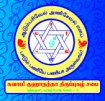 | ஸ்ரீ மஹா பெரியவா திருப்புகழ் சபை & சுவாமி குஹாநந்தா திருப்புகழ் சபை (சேலம்) Sri Maha Periyava Thirupugazh Sabha & Swamy Gughanandha Thirupugazh Sabha (Salem) | 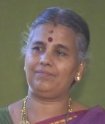 பாடகர் பக்கத்திற்கு பாடகர் பக்கத்திற்கு to singer's page |
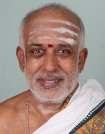 | சுவாமி குஹாநந்தா திருப்புகழ் சபை (சேலம்) இப்பாடலின் பொருள் Swamy Gughanandha Thirupugazh Sabha (Salem) meanings in Tamil |  |
 | திரு சபா. மெய்யப்பன் Thiru S. Meyyappan பாடகர் பக்கத்திற்கு to singer's page |
|
|
Song 471 - katti muNdaga (chidhambaram) katti muNdakara pAli angithanai mutti aNdamodu thAvi vindhu oli kaththa manthir avadhAna veNpuravi ...... misaiyERi kaRpagam theruvil veedhi koNdu sudar patti mandapam udAdi indhu vodu katti vindhu pisagAmal veN podi kod ...... asaiyAmal suttu vempura niRAga vinjai kodu thaththuvangaL vizha chAdi eNguNavar sorggam vandhu kaiyuL Aga endhai padham ...... uRamEvi dhukkam vendhu vizha nyAnam uNdu kudil vajjirangaLena mEni thangam uRa sudhdhagam pugudha vEdha vindhaiyodu ...... pugazhvEnO ettiraNdum aRiyAdha en seviyil ettiraNdum idhuvAm ilingamena ettiraNdum veLiyA mozhindha guru ...... murugOnE ettiraNdu dhisai Oda senkurudhi ettiraNdum uruvAgi vanchakar mel ettiraNdu dhisaiyOrgaL pondra ayil ...... viduvOnE chetti endru sivakAmi than padhiyil kattu sengkai vaLai kURum endhai ida chiththamum kuLir anAdhi vaN poruLai ...... navilvOnE chetti endru vana mEvi inbarasa saththiyin seyalinALai anburuga thetti vandhu puliyUrin mandruL vaLar ...... perumALE. ......... Meaning ......... katti: (Not letting the pranic air -oxygen- to be dissipated and) holding it in its place *1, muNdakara pAli angithanai mutti: arousing the auspicious flame of SivA located in the lotus of MUlAdhara ChakrA *2 aNdamodu thAvi vindhu oli kaththa: making it leap right up to the cosmic zone (Brahamaranthiram), creating the union of SivA and Sakthi with a deafening sound, manthir avadhAna veNpuravi misaiyERi: mounting the white horse *3 that remains numinously standing in the hall specially built, kaRpagam theruvil veedhi koNdu: driving that horse along the street of SivA that yields all wishes like the KaRpaga tree, sudar patti mandapam udAdi: arriving at the plank called lalAtam *4 where all tenets converge, practicing there many yOgA methods *5 (such as DhyAnam, PrathyAkaraNam, DharaNai), indhu vodu katti vindhu pisagAmal: carefully binding the breath so as to hold the nectar from the moon from spilling and the energy from slipping, veN podi kod asaiyAmal: wearing the holy ash and standing still, suttu vempura niRAga vinjai kodu: burning into ashes the three slags (thiripuram - represented by arrogance, karma and delusion), acquiring the eight siddhis *6, thaththuvangaL vizha chAdi: knocking down the mischief created by the ninety-six tenets, eNguNavar sorggam vandhu kaiyuL Aga: attaining the heavenly pinnacle of SivA, the Lord of eight characteristics *7, endhai padham uRamEvi: remaining entrenched in that bliss of my Lord, dhukkam vendhu vizha nyAnam uNdu: burning away the misery of birth, imbibing the nectar of true knowledge, kudil vajjirangaLena mEni thangam uRa: turning my body into a solid diamond rock, changing my complexion into a golden hue, sudhdhagam pugudha vEdha vindhaiyodu pugazhvEnO: and attaining pure liberation, will I be able to sing Your glory in an amazing VEdic meter? ettiraNdum aRiyAdha en seviyil: Into my ears, a stupid fool who does not even know that eight and two make ten, ettiraNdum idhuvAm ilingamena ettiraNdum veLiyA mozhindha guru murugOnE: You preached that those numbers are the symbols of SivA *8 and further elucidated that they represent the PraNava ManthrA OM *9, Oh MurugA, my Master! ettiraNdu dhisai Oda senkurudhi: In all the ten directions (the usual eight directions, along with zenith and nadir, the top and the bottom of the celestial sphere), You let the red blood flow; ettiraNdum uruvAgi vanchakar mel ettiraNdu dhisaiyOrgaL pondra ayil viduvOnE: You assumed sixteen postures *10 and wielded the spear upon the treacherous demons in the battlefield and also those demons in many worlds situated in the ten directions, Oh Lord! chetti endru sivakAmi than padhiyil: He assumed the appearance of a bangle-vendor and went around the streets of Madhurai ruled by AngayaRkaNNi (an incarnation of PArvathi); kattu sengkai vaLai kURum endhai ida(m): He placed the bangles on the wrists of the Queen squeezing until they turned red and bargained for a price of the bangles; He is my Lord SivA; chiththamum kuLir anAdhi vaN poruLai navilvOnE: to the cool content of His heart, You preached to Him the powerful principle of PraNava ManthrA, which is without a beginning, Oh Master! chetti endru vana mEvi: You also assumed the appearance of a bangle-vendor and reached the forest in VaLLimalai; inbarasa saththiyin seyalinALai anburuga: You fell deeply in love with VaLLi, representing the Divine Energy of desire; thetti vandhu puliyUrin mandruL vaLar perumALE.: and then You abducted her, Oh Lord, and came to be seated in the golden shrine of Chidhambaram, Oh Great One! |
(*1) In this song, several Siva-yOgA principles are explained: The inhaled air is known as 'pUragam' and the exhaled air is 'rechagam'. The retained air is 'kumbagam'. The oxygen that enters the body climbs up step by step through several centres, known as 'chakrAs' and ultimately reaches 'sahasrAram' or 'bindhuchakram' on the top of the skull. At that point of union, nectar flows from that chakrA and seeps through and soaks the six centres of the body and returns to the basic chakrA, 'mUlAthAram'. Three zones (namely, the sun zone, the moon zone and the fire zone) and ten nerves ('nAdis') govern the six centres; the principal nerves are 'susumna', 'idaikala' and 'pingala'. idakala: one of the ten 'nAdis' (nerves), when inhalation takes place through the left nostril; pingala: one of the ten 'nAdis' (nerves), when inhalation takes place through the right nostril; susumna: one of the ten 'nAdis' (nerves), situated between the above two 'nadis', and running through the spinal chord covering all the six centres of 'kundalini'. ('idakala' and 'pingala' are entwined around 'susumna'). If breathing is controlled through a yOgA called 'praNAyAmA', the mind becomes tranquil. |
(*2) The names of the chakrA centres, the deities, the elements, the zones of the body where they are located, the shape of the chakrAs, the description of the flowers in the chakrAs, the letters of the ManthrA governing them and the temple-towns representing them are given in the following chart: | ||||||
| ChakrA mUlAthAram swAthishtAnam maNipUragam anAgatham visudhdhi AgnyA Bindu chakkaram (DhwAdhasAntham, SahasrAram, Brahma-ranthiram) | Body Zone Genitals Belly-button Upper belly Heart Throat Between the eyebrows Over the skull | Element Earth Fire Water Air Sky Mind | Shape 4-petal lotus Triangle 6-petal lotus Lingam Square 10-petal lotus cobra in box central circle 12-petal lotus Triangle lotus circle 16-petal lotus Hexagon central circle 3-petal lotus 1008-petal lotus | Letter Om na ma si va ya | Temple ThiruvArUr ThiruvAnaikkA Thiru aNNAmalai Chidhambaram ThirukkALaththi VaranAsi (kAsi) Mt. KailAsh | Deity VinAyagar BrahmA Vishnu RUdhran MahEswaran SathAsivan Siva-Sakthi Union |
(*3) The 'white horse' represents the white 'nAdi', called 'susumna'. |
(*4) 'lalAtam' represents the region between the eye-brows. Here the three 'nAdis', namely, 'susumna', 'idakala' and 'pingaLa' merge - creating a dazzling shrine. |
(*5) The eight kinds of yOgAs 'ashtAnga yOgAs', are as follows: 1. 'iyamam' - non-lying, non-killing, non-stealing, non-yielding to lust and greed; complete control of sensory organs. 2. 'niyamam' - meditation, realising the value of purity, holiness, charity, vows in Saiva ways, knowledge of Saiva Sidhdhantha, sacrifices etc. 3. 'Aasanam' - bodily postures, chief among which are 'padma' (lotus), 'simha' (lion), 'bhadra' (happy), 'gomuka' etc. 4. 'prAnAyAmam' - Control of breath through 'rechagam', 'pUragam' and 'kumbagam'. 5. 'pratyAhAram' - Withdrawing the mind from the objects of the senses and looking inward. 6. 'dharaNai' - Concentration on the six chakras and on the ChidakAsam within the spinal colums. 7. 'dhyAnam' - When the five elements, the five senses and the internal organs like mind, intellect etc. are contained and meditation is undertaken. 8. 'samAdhi' - The final stage of yOgA involving the attainment of 'sahasrArA' and union with Siva-Sakthi. - source: 'Thirumandhiram' by ThirumUlar. |
(*6) Eight Primary Siddhis (occult powers): aNima: reducing one's body to even less than the size of an atom; mahima: expanding one's body to an infinitely large size; garima: becoming infinitely heavy; laghima: becoming almost weightless; prApti: having unrestricted access to all bodies and places; prAkAmya: realising success everywhere; eesatva: possessing absolute lordship; vasitva: the power to subjugate all. |
(*7) The eight characteristics of God are as follows: 1. Peerless -Superiorless- Self-absorbing 2. Always in Chaste form 3. Natural-Sensed 4. Omniscient 5. By nature, bondless 6. Height of Grace 7. Omnipotent 8. Limitlessly Blissful. |
(*8) In Tamil, the total of eight and two, namely ten, is symbolised by the letter 'ya' which happens to be the last letter of Siva ManthrA, 'namasivAya'. This 'ya' governs the 'AagnA Chakra' of kundalini, see Note (*2) above, which represents the space between the two eye-brows where the deity 'SadhAsivan' presides. |
(*9) In Tamil, eight is denoted by 'a' and two by "u". Adding 'm' to these two letters 'a+u+m' = 'aum' = 'Om' which is the 'PraNava ManthrA'. |
(*10) In KumAra ThanthrA, Murugan's 16 forms are mentioned. These are: | |
|
|
| தமிழில் PDF அமைப்பு ஆலய வரிசை அகரவரிசை எண்வரிசை தேடல் in PDF venue list alphabetical numerical search |
| ... www.kaumaram.com ... The website for Lord Murugan and His Devotees முகப்பு அட்டவணை மேலே தேடல் home contents top search |
If you do not see Tamil characters or for 'offline' viewing, please install 'SaiIndira' fonts from Azhagi.com download Free Azhagi software |
Kaumaram.com is a non-commercial website. This website is a dedication of Love for Lord Murugan. Please take note that Kaumaram.com DOES NOT solicit any funding, DIRECTLY or INDIRECTLY. |